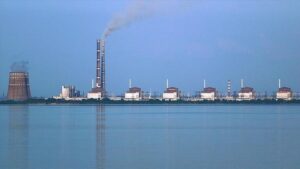
All six power units of the Russian-occupied Zaporozhye nuclear power plant remain offline despite the restoration of the ZNPP 750 kV overhead transmission line – Dneprovskaya.
“All six units remain disconnected from the grid after the resumption of the power line,” the IAEA said in a statement on Ukraine on Thursday evening.
The agency also noted that at the time of publication there is no information on the direct cause of the power outage, and in the event of a loss of external power, ZNPP, like other nuclear power plants around the world, still has diesel generators available to provide backup power.
“Almost every day, a new incident occurs at or near the ZNPP. We cannot afford to waste any more time. I am determined to personally lead the IAEA mission to the plant in the coming days to help stabilize the situation with nuclear safety and security,” he said in connection with with this, IAEA Director General Rafael Grossi, whose words are quoted in the message.
On his Twitter, Grossi, after meeting with French President Emmanuel Macron in Paris, also noted that France is fully mobilized to support the efforts of the IAEA to send an emergency mission of experts to the Zaporozhye NPP.
In addition, the British Ministry of Defense on its Twitter on Thursday reported that Russia had installed armored personnel carriers within 60 meters of the fifth ZNPP reactor.
“Probably, Russian troops tried to hide the vehicles by parking them under overhead pipes,” the Defense Ministry suggested, adding that, apparently, Russia was ready to use any Ukrainian military activity near the ZNPP for propaganda purposes.
“As long as Russia continues its military occupation of the ZNPP, the main risks to the operation of the reactor are likely to remain failures in the operation of the reactor cooling systems, damage to the backup power supply, or errors by pressure personnel,” the ministry said.
As reported, on August 25, ZNPP was completely disconnected from the grid for the first time in its history due to the shutdown of the last (fourth) ZNPP communication line with the Ukrainian energy system – 750 kV overhead line ZNPP – “Dneprovskaya”.
According to the NAEK Energoatom, the overhead lines were switched off due to fires at the ash dumps of the Zaporizhzhya TPP, located next to the Zaporizhzhya NPP, as a result of shelling by the Russian military.
The shutdown of the overhead line led to the operation of the protection of two operating ZNPP power units – Nos. 5-6.
Three other communication lines were damaged earlier during shelling by the Russian military.
“The NPP’s own needs for power supply are provided from the energy system of Ukraine through the communication line of ZNPP – Zaporizhzhya TPP. There are no comments on the operation of automation and security systems yet,” the NAEC explained.
After the station was seized by the Russian military on March 4, it switched to work in two blocks out of six, then for two weeks it worked with three, and recently again with two.
The head of the IAEA, Grossi, suggested on August 25 that the mission to the ZNPP is a matter of a few days.
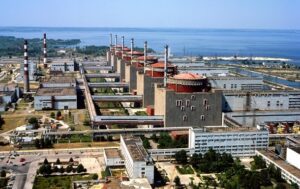
Ukraine has denied Director General of the International Nuclear Energy Agency (IAEA) Rafael Mariano Grossi a visit to the Russian-occupied Zaporozhye nuclear power plant until it is liberated, Energoatom reported.
“The Ukrainian side did not invite Grossi to visit ZNPP and previously denied him such a visit, stressing that a visit to the plant would be possible only when control over it was returned to our country,” Energoatom’s Telegram channel reported on Tuesday.
The message from Grossi that he received an invitation from Ukraine to visit the occupied ZNPP was called by the company another attempt to get to the plant by any means in order to legitimize the stay of the Russian occupiers there and, in fact, approve all their actions.
“There will be conclusions from the IAEA, such as “the plant continues to operate safely, the radiation background is normal, there are no radiation leaks, nuclear materials are kept safe, the Russian military and representatives of Rosatom take care of this, and there are no complaints against them,” Energoatom warns “.
At the same time, they explained the situation with the termination of the ZNPP online transmission of data to the agency on the state of affairs with nuclear materials, by which Grossi, in particular, explained the need for his visit.
“Loss of communication” between ZNPP and the IAEA was caused by the actions of the Russian invaders, who disconnected the Ukrainian operator Vodafone in Energodar, and the IAEA has a data transmission contract with Vodafone,” the NAEC described the situation.
At the same time, the company noted that all data collection points and servers that were under the control of the agency were closed and sealed. The information itself is accumulated on the server and will be transmitted when Vodafone is turned on.
“It seems very likely that it was the Russian side, by prior agreement with the IAEA, who made sure that the agency “lost control” without having access to this information, which means that the IAEA director general had a reason to come to the station,” Energoatom admitted.
In addition, they expressed the opinion that Grossi’s previous visits to Ukraine did not bring any benefit.
“Let us recall that on the way back after visiting the Pivdennoukrainsk NPP, he went to a meeting with the head of Rosatom, and together they reported to the world how good everything was at the Zaporozhye station,” the company stressed.
They also recalled that almost a quarter of the IAEA leadership consists of Russians, which casts doubt on the objectivity of its decision-making.
On June 6, Grossi tweeted once again that the IAEA was preparing an expert mission to the ZNPP, noting that it had stopped transmitting data, and referred to the invitation of Ukraine.
“Ukraine invited us, we will go there,” he wrote.
As reported, speaking at the opening of the meeting of the IAEA Board of Governors, Grossi called on the Board to support him in organizing a visit to the Zaporizhzhya NPP, and also noted that this issue needs UN support.
During the war, the IAEA carried out three expert missions in Ukraine – one to the Pivdennoukrainsk nuclear power plant and two to the Chernobyl nuclear power plant.
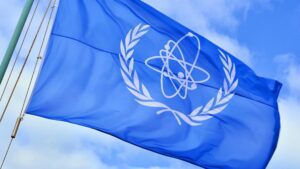
The International Atomic Energy Agency (IAEA) has completed its second mission to Chornobyl nuclear power plant (NPP) and the exclusion zone after completing planned nuclear safety activities, Director General Rafael Mariano Grossi said.
“This week’s combined IAEA safety, security and safeguards mission succeeded in achieving all its objectives, despite the significant logistical challenges in travelling and working in Ukraine. It was the third such mission to Ukraine since the conflict began and it will be followed by others in the coming weeks and month,” Grossi said.
“The Director General is now also continuing his efforts to organize an IAEA mission to Ukraine’s largest NPP, Russian-controlled Zaporizhia, to carry out important nuclear safety, security and safeguards activities at this site in the country’s south,” the IAEA said on its website.
“With respect to safeguards, the transmission of remote safeguards data to IAEA headquarters from the Zaporizhia NPP stopped on May 30. With the assistance of the operator (Energoatom), the IAEA is continuing technical attempts to re-establish the data transmission. The IAEA continues to receive safeguards data from its systems installed at the other three operational NPPs in Ukraine,” the report says.
At the same time, Adviser to the Prime Minister of Ukraine Yuriy Boiko noted that the IAEA’s efforts could be more active, in particular in the issues of liberation of Zaporizhia NPP from Russian occupation, and expressed opinion that it is impossible for its head to visit this station in such conditions.

International Nuclear Energy Agency Director-General Rafael Mariano Grossi has described the radiation levels at the Chernobyl nuclear power plant as normal after it was occupied by Russian troops, AFP reported.
“The level of radiation, I would say, is normal … There were certain moments when the level increased due to the movement of heavy equipment that Russian troops brought here, and when they left the station,” Grossi was quoted by AFP during his visit to the Chernobyl nuclear power plant on April 26.
The agency, which previously indicated that the IAEA Director General called the level of radiation abnormal, subsequently corrected his words on his Twitter.
As reported, Grossi visits the Chernobyl nuclear power plant on the anniversary of the accident on April 26. He led the agency’s mission to the station to deliver various types of radiation monitoring equipment, including radionuclide identification devices and gamma dose rate meters, to the Chernobyl nuclear power plant, as well as conduct radiological and other assessments. In addition, IAEA experts plan to repair the systems for remote monitoring of safeguards that stopped transmitting data to the agency’s headquarters in Vienna immediately after the station was seized by Russian invaders.
As noted by the IAEA, since the withdrawal of the Russian military from the Chernobyl nuclear power plant, Ukraine has taken significant steps to operate it safely, but the overall situation in the exclusion zone remains difficult, in part due to damaged bridges and demining activities.
The IAEA also noted that, in close coordination with Ukraine, it developed detailed plans for providing assistance in the security of the country’s nuclear facilities.
Russian troops left the Chernobyl zone on March 31 after a five-week stay in it since the capture at the beginning of the war on February 24. During their stay in the zone, the Russian military, in particular, built fortifications over a large area, including in the Red Forest, the dirtiest point in the zone. According to the head of GAZO Yevgeny Kramarenko, the risk of serious infection of the military and equipment from such actions is high. At the same time, according to him, during the retreat from Kyiv, Russian troops withdrew about 10,000 pieces of heavy equipment through Chernobyl, which, like the military, could also be contaminated with radiation when moving through dangerous territory. The movement of a large amount of military equipment provoked the rise of radiation dust and an increase in radiation in the zone.
According to the head of NAEK Energoatom Petr Kotin, in some places the radiation level was exceeded 50 times.
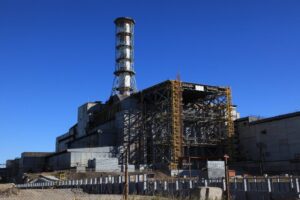
IAEA Director General Rafael Grossi will lead a team of experts who will visit the Chernobyl nuclear power plant next week, according to a statement posted on the organization’s website on Friday.
“International Atomic Energy Agency (IAEA) Director General Rafael Mariano Grossi will lead an expert mission to Ukraine’s Chernobyl nuclear power plant (NPP) next week to step up assistance to prevent the danger of a nuclear accident during the current conflict in the country,” the statement said.
It is noted that a group of IAEA employees will arrive in Chernobyl on April 26 to deliver the necessary equipment and conduct radiological and other surveys of the area.
In March, Grossi visited the South Ukrainian NPP, where he discussed IAEA assistance to Ukraine with the Minister of Energy of Ukraine German Galushchenko, the head of the nuclear regulator of Ukraine Oleg Korikov, the head of the State Enterprise NNEGC Energoatom Petr Kotin and the general director of the South Ukrainian NPP Igor Polovich. Then he noted, that the personal presence of IAEA specialists on the ground would help prevent the risk of a nuclear accident in the face of Russian military aggression, It was noted that such an accident could lead to serious consequences in the field of health and the environment both in Ukraine and abroad.
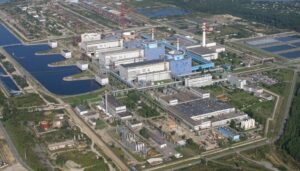
Ukraine has stopped power unit No. 1 of the Khmelnytsky NPP, which remained in operation after power unit No. 2 was taken out for repair, as a result of which only seven of the 15 existing power units are operating in the power system, the International Nuclear Energy Agency (IAEA) reported, citing the Ukrainian nuclear regulator SNRIU.
According to the IAEA’s daily report on Ukraine on its website late on Saturday evening, the agency explained the shutdown of the remaining power unit by taking it out for scheduled repairs.
“Seven reactors are operating in the country, including two at the Russian-controlled Zaporozhye Nuclear Power Plant, three at the Rivne Nuclear Power Plant and two at the Yuzhno-Ukrainian Nuclear Power Plant. Other reactors have been shut down for regular maintenance, including both units of the Khmelnytsky Nuclear Power Plant,” the statement said.
As reported, since February 18, KhNPP power unit No. 2 was shut down for scheduled preventive maintenance, lasting approximately 92 days.
According to the IAEA, power unit No. 2 of the Rivne NPP was recently put into repair, after which 8 out of 15 power units remained in operation.
Earlier, NNEGC Energoatom reported that three ZNPP power units were put into reserve after the station was occupied by Russian invaders, only one is under repair.
Khmelnytsky NPP consisting of two power units (VVER-1000) with a total capacity of 2000 MW is located in Netishyn (Khmelnytsky region).
In total, there are 15 power units in Ukraine equipped with water-cooled power reactors with a total installed electrical capacity of 13.835 GW.